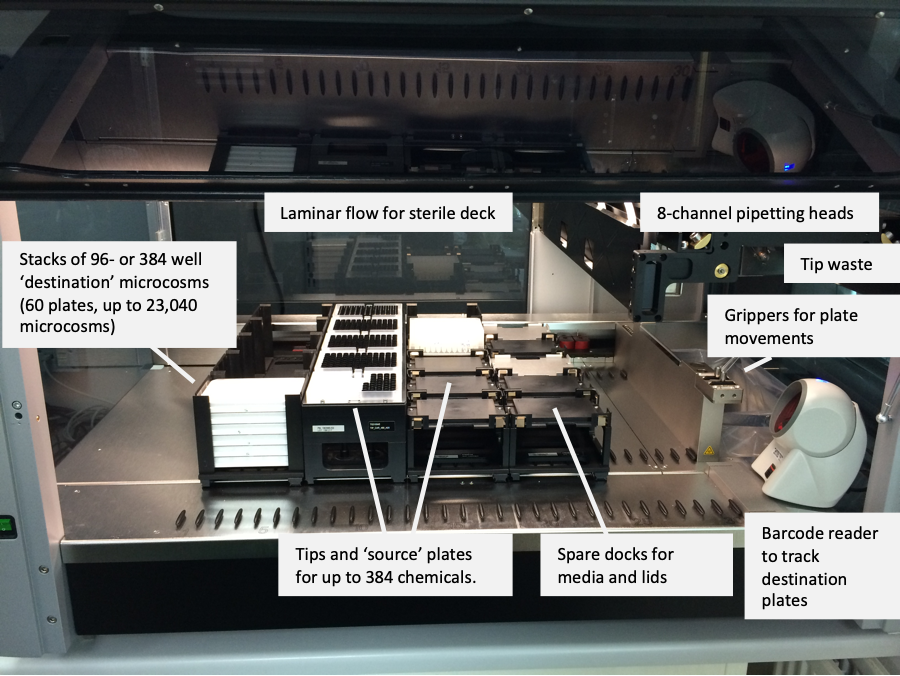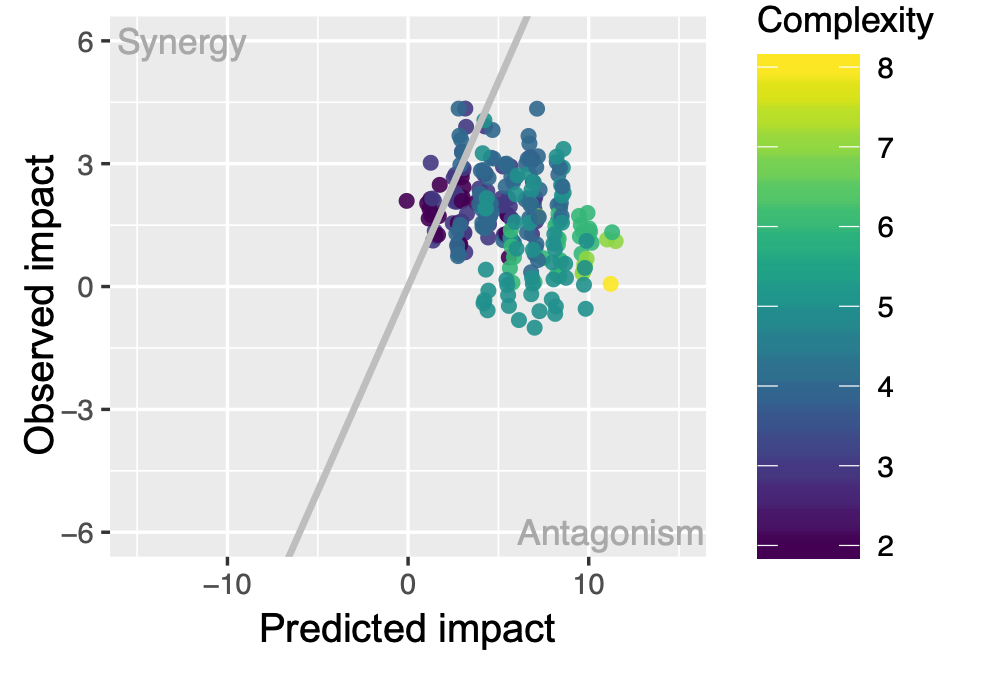WP2 – Bacterial biosensors
Research Team
- Prof. Thomas Bell (Work Package Lead) - Imperial College London
- Dr Emma Ransome - Imperial College London
- Dr Thomas Smith - Imperial College London
Freshwater microbes are an enormously complex ‘black box’ that underpins freshwater food webs and key ecosystem functions and services. These communities have short generation times and are highly responsive to changes in environmental conditions, making them ideal “signallers” (bioindicators) of environmental perturbations and changes in ecosystem health. We are using these complex communities as ecological canaries to understand the simultaneous impact of cocktails of many different chemical stressors. In field trials, only a limited number of chemicals can be tested because experiments are expensive and labour intensive. However, well-replicated experiments involving mixtures of many types of chemicals are feasible in the lab. We are using robotic automation to assay the impact of hundreds of chemical mixtures on microbial communities and ecosystem functions, which will answer fundamental questions about interactions among chemical stressors and provide guidance for field trials.

Fig.1 Robotic automation of chemical mixture experiments. A liquid handling-robot can create hundreds of mixtures of chemicals and test their impact on microbes isolated from environmental samples.
Our pilot experiments have created defined mixtures of chemicals that align with the chemicals used in the other parts of the project. In a series of pilot experiments, we created cocktails containing up to 8 different chemicals and measured their impact on the growth of a diverse community of microbes. In figure 2 below, each data point is a mixture of chemicals (from 2 to 8). Lighter colours contain more chemicals and dark blue contain fewer. On the y-axis is the impact of the chemicals on community growth. The x-axis shows the impact that we would predict in the mixture of chemicals, where the prediction is based the impact of each chemical individually. The grey line is the 1:1 line, where our observations match our predictions.

Fig.2 The impact of mixtures of chemicals on a microbial communities becomes more unpredictable with increasing complexity of the chemical cocktail. Note these are preliminary data
One result from these preliminary data is that our predictions get worse (further from the 1:1 line) as the chemical cocktails get more complex. This implies that piecemeal investigations of chemicals one-by-one may not adequately predict their impacts in natural environments, where interactions among chemical stressors could play a prominent role.